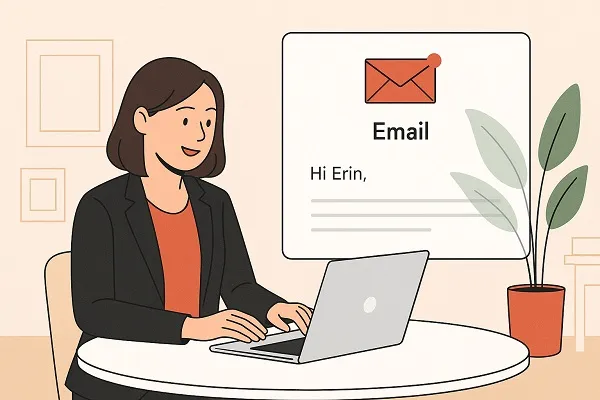How to network without feeling awkward is a challenge many professionals face, especially in unfamiliar environments or industries. Whether you’re at a conference, business event, or casual meetup, the pressure to connect, impress, and maintain conversation can be overwhelming. The good news? Networking doesn’t have to be stiff, uncomfortable, or unnatural.
When approached the right way, networking becomes less about pitching yourself and more about building meaningful relationships. Here’s how to ease into the process without the awkwardness.
Shift Your Mindset From “Selling” to “Connecting”
A major reason people feel awkward networking is because they think they must promote themselves constantly. That pressure creates tension and can come off as insincere.
Instead:
- Focus on listening more than speaking
- Ask thoughtful questions rather than trying to impress
- Think of it as making a new friend, not scoring a lead
This simple mindset shift makes networking feel more human and less transactional.
Prepare Before the Event
Walking into a networking event blindly can raise anxiety. Doing a little prep beforehand can ease nerves and give you more confidence.
What to do:
- Research the event: Know the theme, purpose, and attendees if possible
- Create a short self-introduction: 1–2 sentences about who you are and what you do
- Prepare conversation starters: These could be about the event itself, the venue, or recent industry news
When you come in with a few things to say, it reduces awkward silences and helps conversations start naturally.
Use Open Body Language

Your body often speaks before you do. Closed-off posture, lack of eye contact, and fidgeting signal discomfort, which can make others feel uneasy too.
Practice these tips for confident, open body language:
- Maintain eye contact (without staring)
- Keep your arms relaxed and uncrossed
- Face the person you’re speaking with
- Smile—genuinely, not forcefully
Even if you feel nervous, open body language projects calm and interest.
Start With Easy Icebreakers
You don’t need a clever line to begin a conversation. Simple and friendly works best. Start with low-pressure topics that invite others to speak.
Examples of natural openers:
- “Hi, I don’t think we’ve met yet. I’m [Your Name]. What brings you here today?”
- “Have you been to this event before?”
- “I noticed your badge/company name—what do you do there?”
These types of questions encourage dialogue without feeling intrusive or salesy.
Focus on Listening Over Talking
Active listening is one of the most underrated networking skills. Instead of waiting for your turn to talk, stay present and curious.
Ways to show you’re engaged:
- Nod or give verbal affirmations like “That’s interesting” or “Tell me more”
- Ask follow-up questions
- Avoid interrupting or shifting the focus back to yourself too quickly
When people feel heard, they remember you more positively—and that’s networking gold.
Find Common Ground
People naturally connect over shared experiences. Whether it’s a mutual contact, a hobby, or a challenge in your industry, commonalities build rapport.
Tips to find shared interests:
- Pay attention to small details in what they say
- Mention your own interests or challenges when relevant
- Use humor where appropriate to break the ice
You’re not just collecting business cards—you’re creating connections that can grow over time.
Have a Few Go-To Stories or Talking Points

You don’t need a script, but having a few personal anecdotes or insights can make you feel more at ease when the conversation lulls.
Examples:
- A brief, interesting story about a project you’re working on
- A challenge you recently overcame
- An industry trend you’re curious about
Keep it short, relevant, and conversational—not a monologue.
Don’t Be Afraid to Join a Group
Approaching an existing group may feel intimidating, but most professional groups are open to including others.
Here’s how to do it without being awkward:
- Wait for a natural pause in their conversation
- Smile, make eye contact, and say, “Mind if I join you?”
- Listen first before jumping into the conversation
This shows confidence and respect, and it helps you ease into the discussion naturally.
Know When (and How) to Exit a Conversation
One of the trickiest parts of networking is knowing how to leave a conversation without being abrupt. You don’t want to overstay your welcome or miss other opportunities to connect.
Polite ways to wrap up:
- “It’s been great talking with you. I want to be sure I meet a few more folks before the end.”
- “Thanks for sharing that—I really enjoyed the conversation. I’ll let you mingle, but let’s connect on LinkedIn.”
- “I’ll grab another drink/refill and let you chat with others too—nice meeting you!”
Always leave on a friendly note and offer a next step if the connection is worth pursuing.
Follow Up Without Feeling Pushy

A strong follow-up turns a one-time chat into a long-term contact. But it doesn’t have to be intense or overly formal.
Best practices for following up:
- Send a quick message within 1–2 days (LinkedIn or email works well)
- Mention something specific you talked about
- If relevant, offer something of value—an article, introduction, or invitation
- Keep it short and friendly
Consistency and authenticity matter more than formality.
Practice Makes It Easier
Like any skill, networking gets easier the more you do it. The first few times may feel awkward, but over time, it becomes second nature.
Build your confidence gradually:
- Start with smaller or familiar events
- Go with a friend if it helps at first
- Reflect on what went well after each experience
Soon, you’ll realize you’re able to spark conversations, make real connections, and enjoy the process without overthinking it.
Networking doesn’t have to feel like a performance. The key is to stay genuine, curious, and present. When you approach networking with the goal of learning and connecting—not impressing—it becomes more comfortable and far more effective. Each interaction is a step toward building relationships that can support your career, growth, and confidence long-term.
Content reviewed and published by Tier2Tek Staffing Editorial Team .

